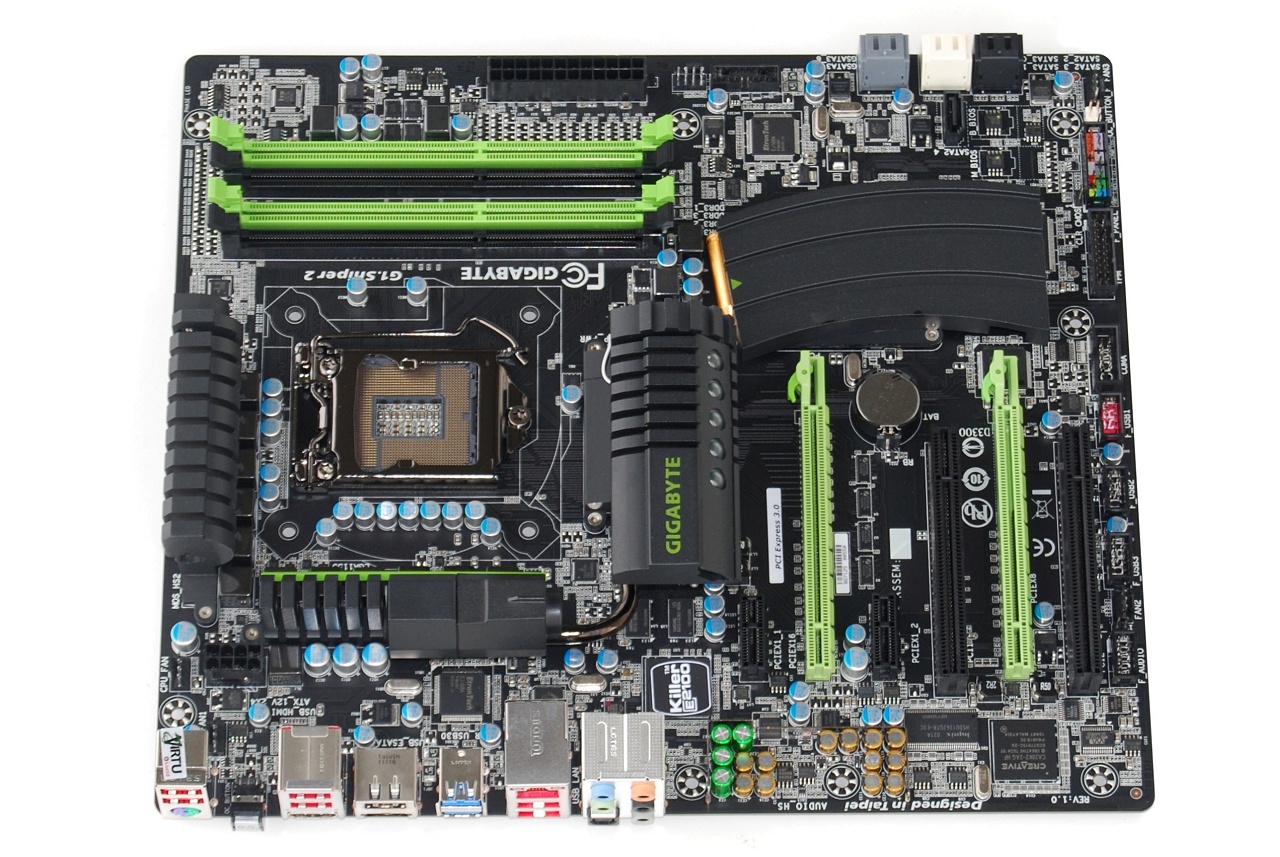Design & Layout
The G1.Sniper2's matte black PCB gives it a unique look, as does its black and green component design. Aesthetics aside, we have no real complaints about the board's layout. Perhaps the only issue with the design is its placement of the DIMM slots and CPU socket, which are virtually on top of each other.
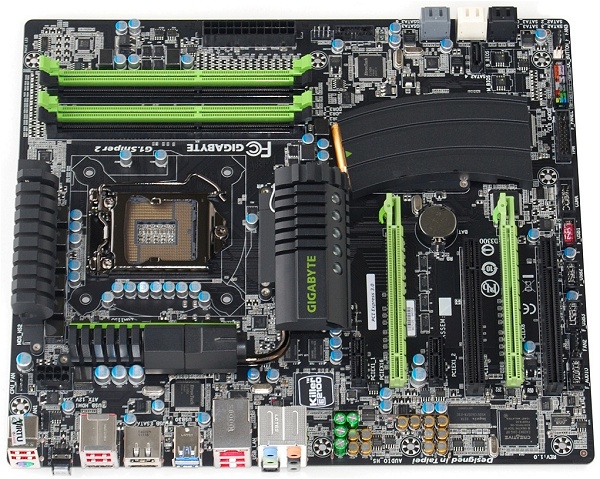

The G1.Sniper2 features an eight-phase power design that utilizes low core energy loss Ferrite Core Chokes as well as Low RDS(on) Driver-MOSFETs. These components are said to handle a higher current load while offering better power efficiency and lower operating temperatures. Each power phase of the motherboard has three main components, one choke, one capacitor and one MOSFET.
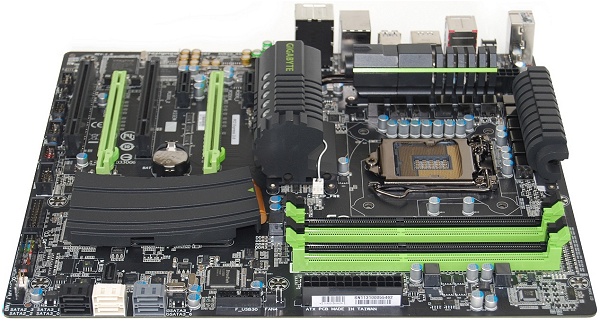
Gigabyte has also included its Dual Power Switching design, which is meant to maximize the board's lifespan. When Dual Power Switching is activated, two sets of four power phases operate in tandem, automatically enabling one set of four phases and disabling the other four, allowing the inactive set to rest.

Unlike a traditional power design where some phases can fail prematurely because they're always in operation, Dual Power Switching ensures that each set of phases share the workload, effectively doubling their lifespan.
Another unique feature of Gigabyte's Dual Power Switching is that if one of the power phases fails, the motherboard will automatically disable its group of four phases and continue operating with the other set. With traditional motherboards, if one power phase fails, the board becomes a paperweight.
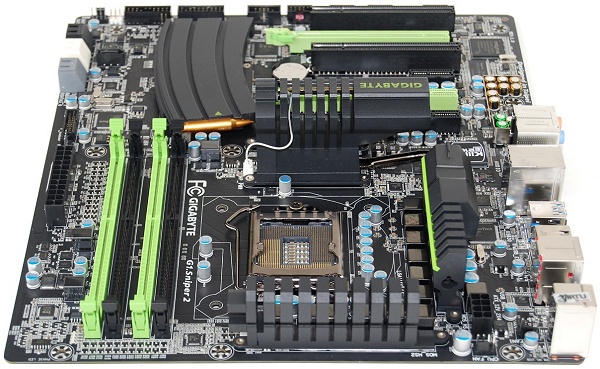

Cooling the eight-phase power design are two large heatsinks, one of which is connected to a bigger heatsink using a 6mm heatpipe. The larger heatsink is located where you'd typically find the northbridge.


However, because the Z68 chipset has been used there is no northbridge, meaning this heatsink isn't cooling anything. The Z68 is cooled by the smaller heatsink that resembles an ammunition magazine.
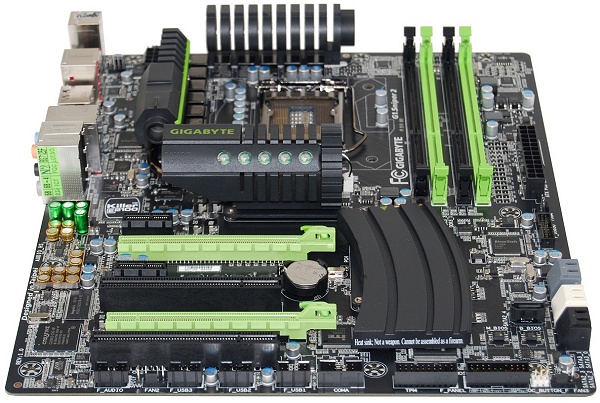

The two PCI Express x16 slots (color-coded green) are separated by two other expansion slots, providing plenty of room for airflow between SLI or Crossfire setups. While the primary slot offers x16 bandwidth, the secondary slot is electrically wired for x8 speeds because the Z68 can only support dual graphics cards in an x8/x8 configuration.

Gigabyte has mounted the six SATA ports at a 90-degree angle behind the second and third PCIe x16 slots to avoid conflicts with high-end graphics cards, which typically span the length of a motherboard. A seventh slot is positioned vertically and is designed to connect to a powered front panel eSATA port.

The four DDR3 DIMM slots have also been placed far enough away from the primary PCIe x16 slot, which is important on an enthusiast board. As we've seen with other Gigabyte boards, the G1.Sniper2 places its CMOS battery between the PCIe x16 slots, making it difficult to access, and it's worth mentioning that there's no CMOS clear switch on the board's I/O panel.
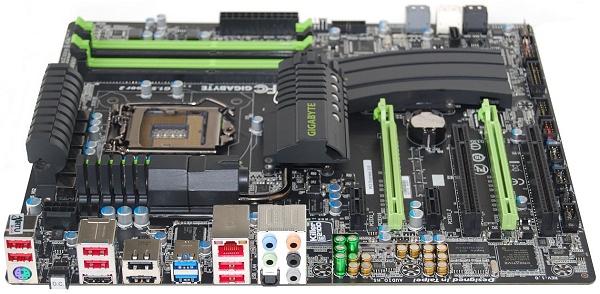
Speaking of which, the rear interface panel is occupied by a single PS/2 port for legacy keyboard and mouse support, seven USB 2.0 ports, two USB 3.0 ports, an eSATA port, HDMI-out, Ethernet, five audio jacks, S/PDIF optical/digital connector and an OC button.
